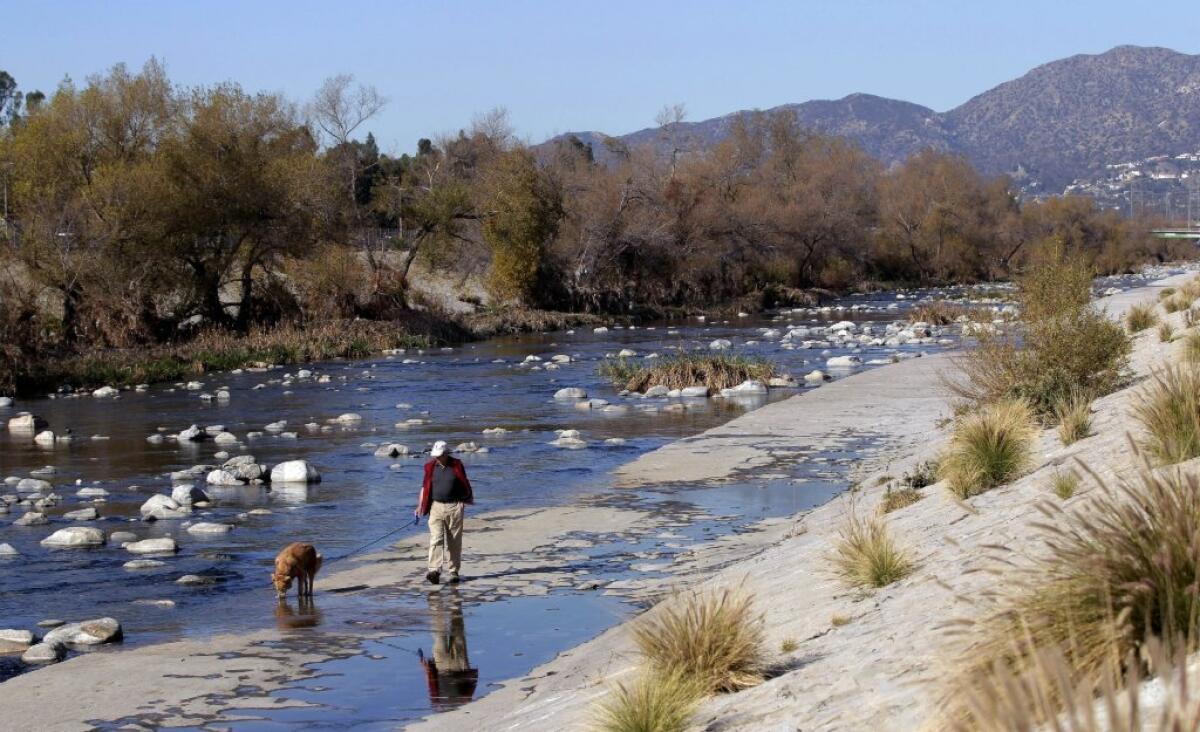Editorial: How green can L.A. and its river be?

- Share via
The decision by the Army Corps of Engineers to proceed with a more expansive remake of a stretch of Los Angeles River creates a historic opportunity: It allows the city to reorient itself away from 20th century development patterns and toward a greener and more habitable urban future.
As The Times reported Wednesday, the Army Corps has thrown its weight behind the most ambitious of several alternatives for the river. Final approval rests with Congress.
There was no doubt that the Army Corps was on board with at least some kind of project to revitalize the 11-mile stretch known as the Glendale Narrows. But it was leaning for a while toward a limited alternative that would have kept the river physically separated from the adjacent neighborhoods.
Instead, the project will bind green space and urban life, the San Fernando Valley and the Central City, the past and the future. The larger scope follows an intensive lobbying campaign by Mayor Eric Garcetti, who deserves much credit for this development.
The announcement comes as the nearby Los Angeles State Historic Park is finally being developed into a city centerpiece that, because of the larger project, now promises to connect with the river close to the point where water once was lifted to clay brick pipes and brought to the growing city.
Does Los Angeles really have a river? Yes — the pueblo was founded where it was to be close to its water source. And it was washed away from that site, wherever that was (historians and archaeologists still search for clues as to the location) and rebuilt many times over the course of three decades, eventually finding a permanent spot on higher ground at the place we now know as El Pueblo or Olvera Street, because the Los Angeles River is a Western river, trickling during the dry months, raging during wet winters, carving new channels in flood years.
Accordingly, the project will not return the river to the dangerous flood hazard it was through the 1930s. It will instead update L.A.’s relationship with its river, converting an ugly concrete back alley into a new verdant frontyard, bringing parkland and recreation, along with wildlife habitat and flood protection, to the city center.
Much of the required funding will come from the federal government, and much will come from the city. Before the vision for the river is realized, there will need to be a serious discussion over how that local component is to be raised. But one step at a time. For now, some celebration is in order.
More to Read
A cure for the common opinion
Get thought-provoking perspectives with our weekly newsletter.
You may occasionally receive promotional content from the Los Angeles Times.






